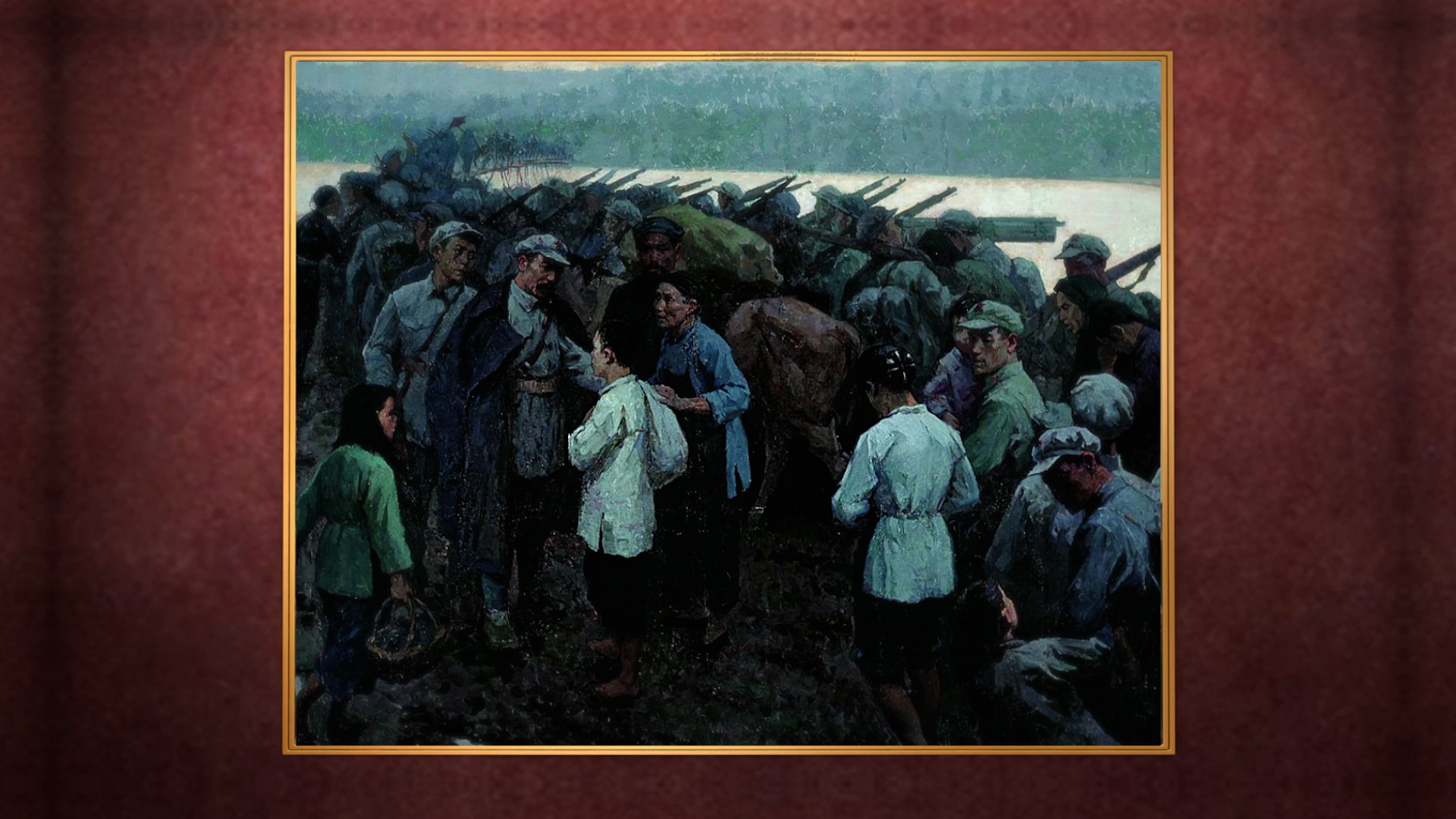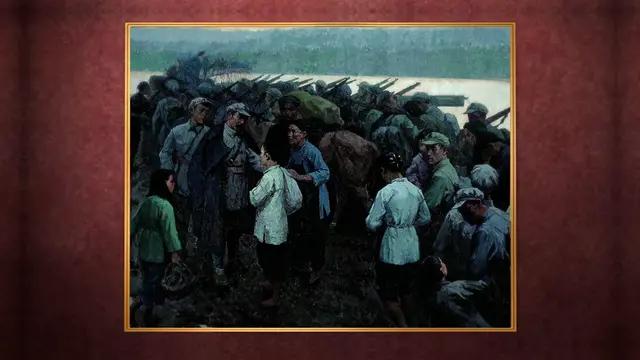02:03

Yudu County in southeast China's Jiangxi Province was the starting point of the Red Army's Long March from 1934 to 1936.
This oil painting was created by Chinese artist Jin Shangyi in 1959, titled "Farewell."
It depicts villagers gathered on the banks of Yudu River to say goodbye to soldiers heading off on the historic trek.
Between 1930 and 1934, the KMT army conducted five campaigns to wipe out communist forces.
The Workers' and Peasants' Red Army fought off the first four campaigns but were nearly crushed in the fifth.
Communist forces were encircled by a much larger KMT army.
In 1934, around 86,000 troops broke through KMT lines and started the Long March which would later prove to be one of the longest tactical retreats in the history of warfare.
Crossing the Yudu River was their first challenge along the journey. Soldiers received a lot of support from villagers.
To help the Red Army cross the 600-meter-wide river, villagers joined efforts to build five floating bridges, using any wood they could collect, including donated door panels and unused coffins.
To avoid being seen by KMT aircraft, they could only construct the bridges at night.
After the Red Army crossed the river during the night, villagers dismantled the bridges the next morning, hid the material in the nearby forest, and swept away all footprints in the sand.
The villagers would go on to repeat the process 15 times in order to avoid being spotted by the enemy.
Around 800 villagers also used their fishing boats to carry soldiers across the river.
The painting, "Farewell", highlights the close bond between villagers and the Red Army led by the CPC.
Check out
The China Report
, our new weekly newsletter.Subscribe here!
 简体中文
简体中文



